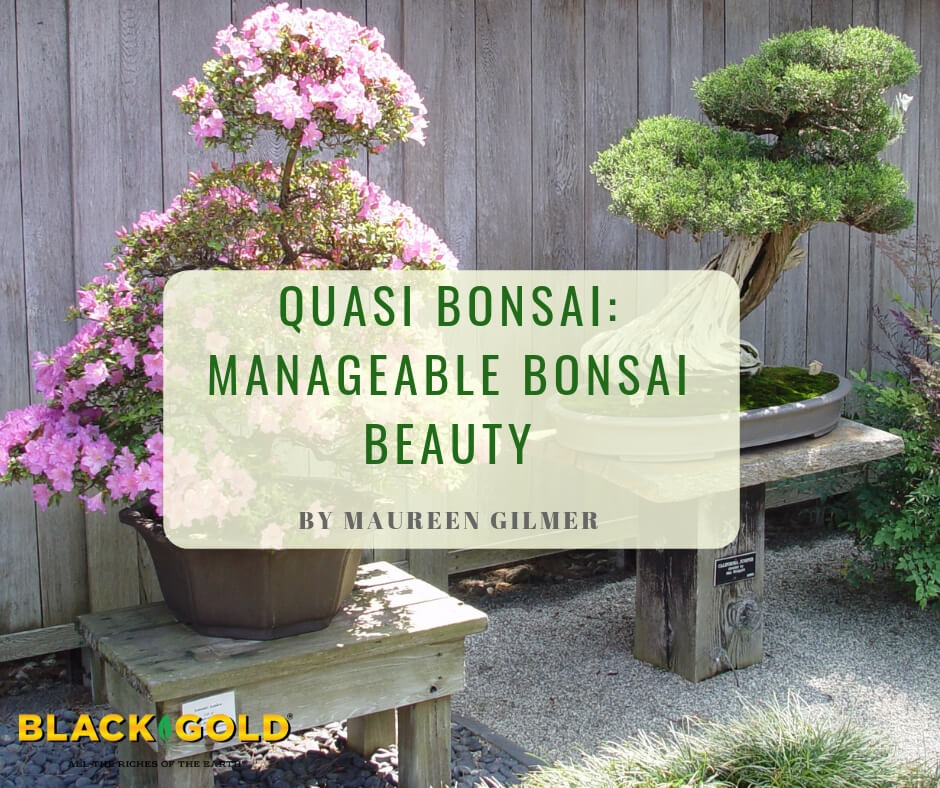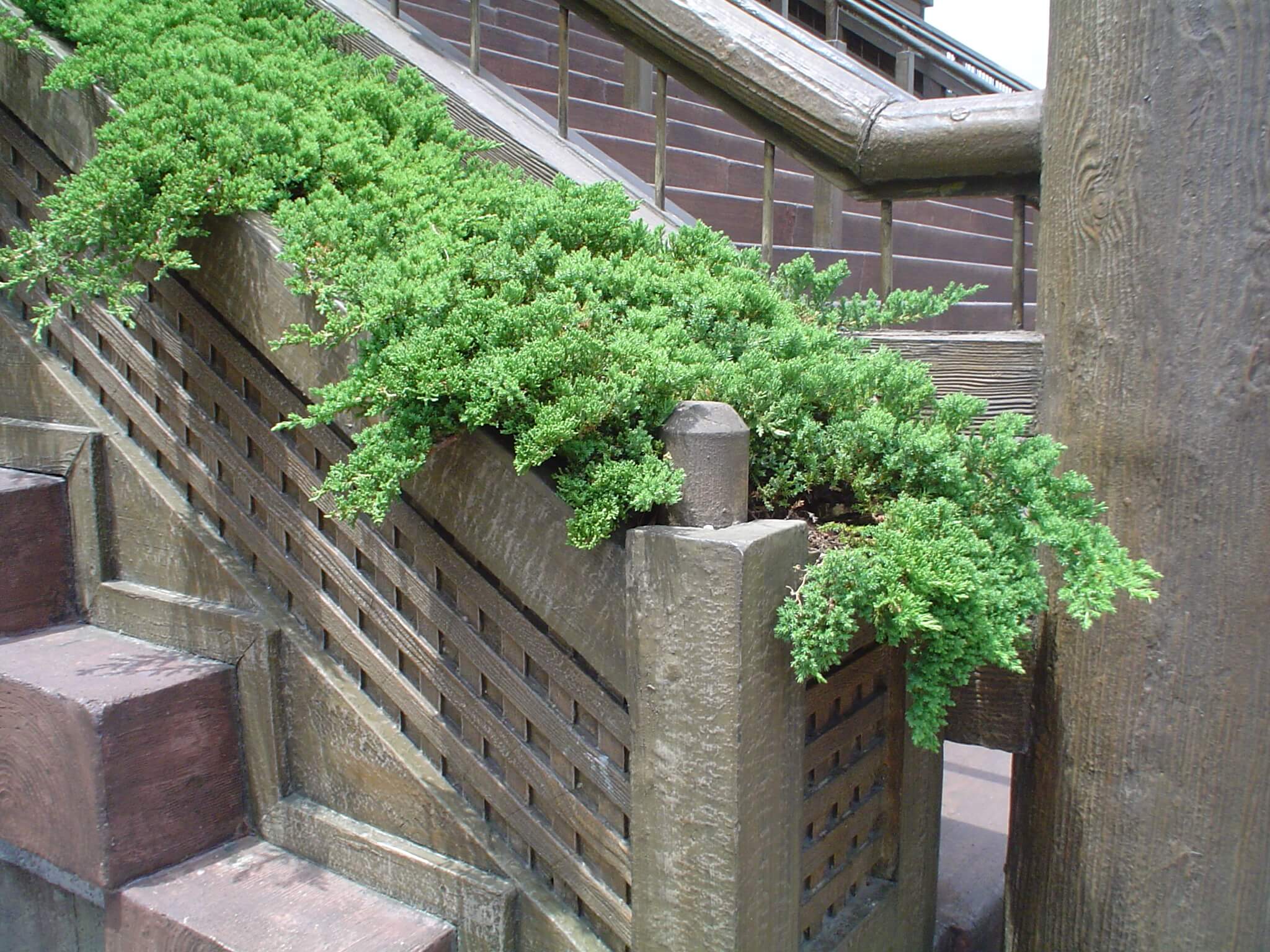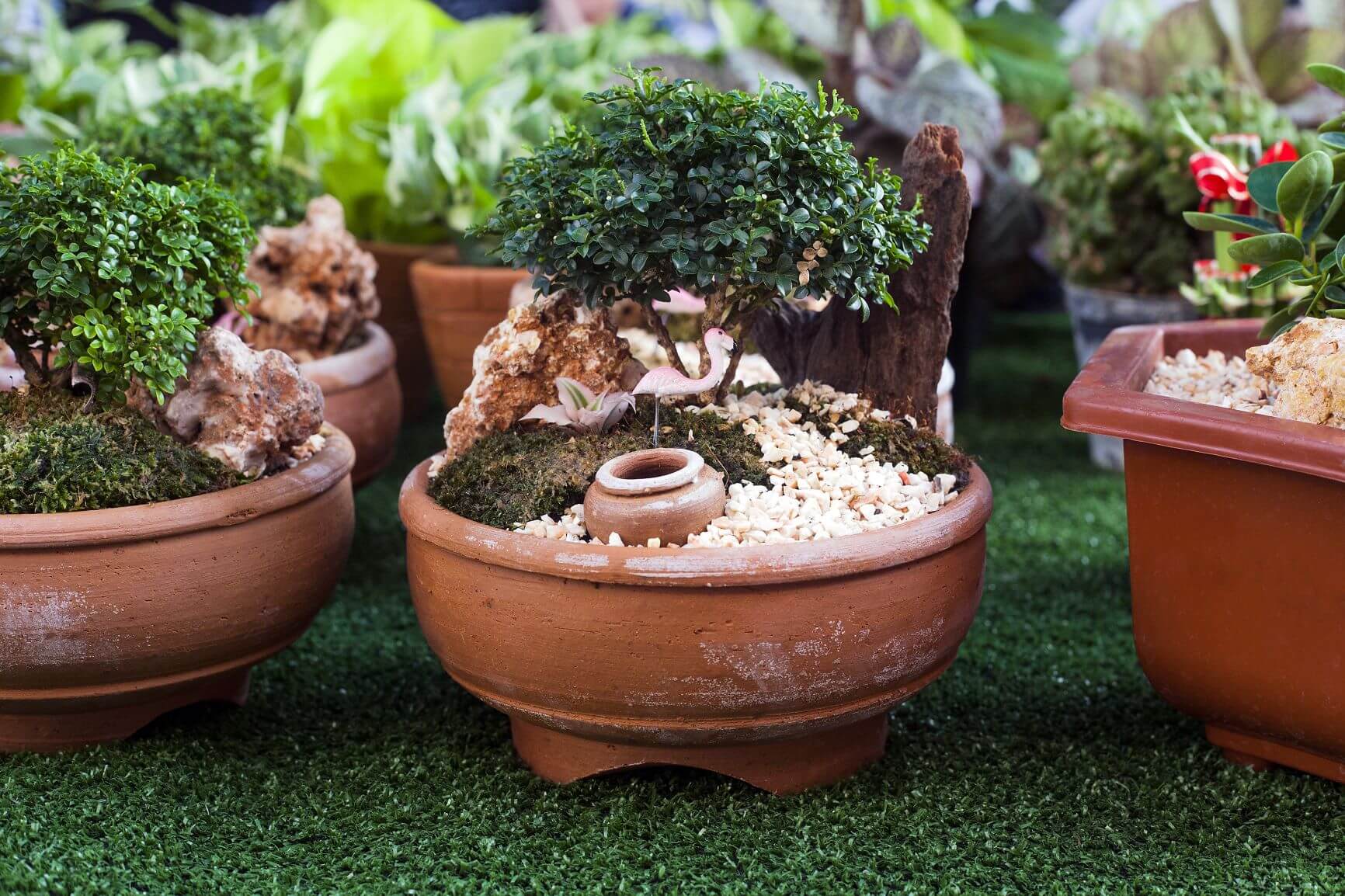
The price of neglecting to water your bonsai in midsummer even for a day will have to be paid in a withered plant. You might as well plough the field and forget the seed as commit such negligence. –Norio Kobayashi, Japan 1951
The little-known secret of true Japanese bonsai trees is that they are watered every day. Not a single sunrise passes without the gardeners inspecting every bonsai inch and checking how much moisture is available to the roots. It’s vital because the shallow, tray-like pots have two or more large drain holes and drain quickly. There’s little room for moisture-holding soil. These miniaturized trees grown in this ancient tradition live centuries due to intimate daily care. It’s also why they are prone to die on our patios, too. Lack of such TLC is a bonsai killer.
Unlike the rigors and high cost of true bonsai keeping, you can change the rules a bit to create a more manageable quasi bonsai that offers the same look with a fraction of the care. Anyone can make one if you understand what’s important to get it right.
Quasi Bonsai Creation

1. Pot Depth to Diameter Ratio
The first step is to find the right sized pot with sufficient depth to diameter ratio. It may be oval or rectangular, but pot diameter must be three times pot depth. Using this as a guide, find pots capable of holding more soil, so the plants do not dry out as fast as they do with traditional pan-shaped pots. It’s really all about the proportions, so your choice may be a simple modern or classic ceramic pot, or even a recycled container.
2. Shrub Type and Size
True bonsai is a full-sized tree adapted to remain small due to perpetual pruning of top and roots to gradually dwarf leaves, flowers, and fruit as well as the trunk and branches. For quasi bonsai, you select a dwarf woody shrub that bears a curious growth habit, instead. Damaged shrubs may prove to be the ideal starter plants for your twisted creation, when compared to a perfect nursery-grown specimen. One gallon shrubs are a good starting size.
 Choose a shrub that is suitable for your bonsai-style pot. Make sure the pot is deep enough to contain at least half the root ball. When transplanting, you’ll have to remove soil and cut and splay the roots at the bottom of the root ball to fit. Set the crown of the shrub so it lies a half inch below the top rim of the pot. Pack the remaining spaces with Black Gold African Violet Potting Mix, or if unavailable, use Black Gold All Purpose Potting Mix. Ensure there’s free space around the pot edge that allows you to fill it with water to seep down at its own rate. It also allows for moss or gravel without instant spill over when filled to the top. With shrubs, this reduces the chance of crown rot from planting too deep.
Choose a shrub that is suitable for your bonsai-style pot. Make sure the pot is deep enough to contain at least half the root ball. When transplanting, you’ll have to remove soil and cut and splay the roots at the bottom of the root ball to fit. Set the crown of the shrub so it lies a half inch below the top rim of the pot. Pack the remaining spaces with Black Gold African Violet Potting Mix, or if unavailable, use Black Gold All Purpose Potting Mix. Ensure there’s free space around the pot edge that allows you to fill it with water to seep down at its own rate. It also allows for moss or gravel without instant spill over when filled to the top. With shrubs, this reduces the chance of crown rot from planting too deep.
3. Great Rocks
Bonsai can be an upright tree, a leaning tree, or one that naturally dangles off the edge of the pot. The latter often requires a pedestal so the dangling part hangs in space. In quasi bonsai, asymmetrical bonsai forms are challenging because the newly planted root ball can be pulled loose by the weight of the rest of the plant after the soil is wet from watering. The trick to keeping the root ball in place is with a counterweight placed on top. This is done with a single large rock selected for its size and compatibility with the plant and pot. It also protects the root ball from solar heat and surface evaporation. The rock can be tall or flat, just as long as the weight is an adequate counterbalance. This also keeps the pot from becoming tippy on the tabletop if one side is too heavy.
4. Quasi Bonsai Pruning
Once planted securely, pruning your quasi bonsai is the most rewarding part of the whole process. First study bonsai tree photos online to get a feel for the various forms and how they are pruned to resemble a larger tree. Find a pair of stout scissors or clippers with a long nose that can reach into the trunk to prune out branches or twigs without breaking others. Do this slowly, standing back often to look at the whole before returning to this detail work. This is where you’ll find your Zen year after year as it matures.
The beauty of bonsai can transform a balcony, patio or yard with instant Asian elements. Make your own this year and discover how easy it is to get the look without strict adherence to the art. Study it well, know the forms and become a bonsai maven among your friends and neighbors.
Plants for Quasi Bonsai

Many shrubs are good candidates for quasi bonsai. Here are five evergreen selections that are easy to grow and train.
Dwarf English Boxwood (Buxus sempervirens ‘Suffruticosa’): Maxing out at 12 to 18 inches tall, this is the best and greenest boxwood for pruning into a small upright form. Train it in a partly sunny location away from drying winds.
Japanese Garden Juniper (Juniperus procumbens ‘Nana’): This tiny juniper is superior to all other compact creeping junipers, due to its dense bluish foliage, tight growth habit, and slow growth. Locate it in full sun.
Dwarf Heavenly Bamboo (Nandina domestica ‘Fire Power’ or ‘Harbour Dwarf‘): This Chinese garden shrub, with its vividly colored foliage, is an ideal choice in lieu of upright trees for creating a mini quasi bonsai grove. Dwarf varieties, which generally reach around 1-2 feet, make for easier training. Choose a full to partial sun location for dwarf heavenly bamboo.
Elephant’s Food (Portulacaria afra): This African succulent is like a small-leaved jade tree. It’s commonly sold as small plants, grows quickly, and withstands hard pruning, while maintaining its heat, and drought resistance. Grow it in full sun to partial shade.
Dwarf Azalea (Rhododendron indicum): Evergreen foliage and scarlet or magenta spring blossoms make this dwarf azalea a great choice for quasi bonsai. Specimens naturally reach only 2-3 feet, so they are easily trained in a partially shaded garden location.


